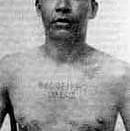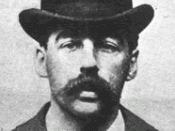M, Fritz Lang's first sound film was released in 1931 in Germany. The film is done in black and white and uses sound as a character rather then new technology over powering the cinematography. Lang's use of the camera is sometimes like a still photograph and not a motion picture, watching the film you could almost see it as a book with pictures and not a movie. Most of the shots make the audience feel as if it was part of the movie. This film is the story of a serial killer in Germany and the public's response and fear of him. When police efforts to track him down are almost worthless the underground crime scene takes responsibility to track him down and prosecute the serial killer. The film's final scene is a trail for the killer by the underground criminals and a look into the serial killers mind and his feelings toward what he has done.
Lang's use of the camera is exceptional and draws the viewer right into the action and makes you feel as if you are right there. The first scene and use of exceptional camera work is when Elise is walking home and her mother nervously awaiting the return of her child. The mother really starts to worry and the camera becomes her eyes. Lang shows a number of still life shots: the empty staircase in a spiral with shadows, the empty table that has dinner ready for Elise, the window frame to the courtyard with no little girls outside playing, and finally the very end when the little girls ball comes rolling out of the bushes, and the balloon with it's string twisted in the telephone wires. This whole scene tells us the little Elise is not coming home and the serial killer has...


